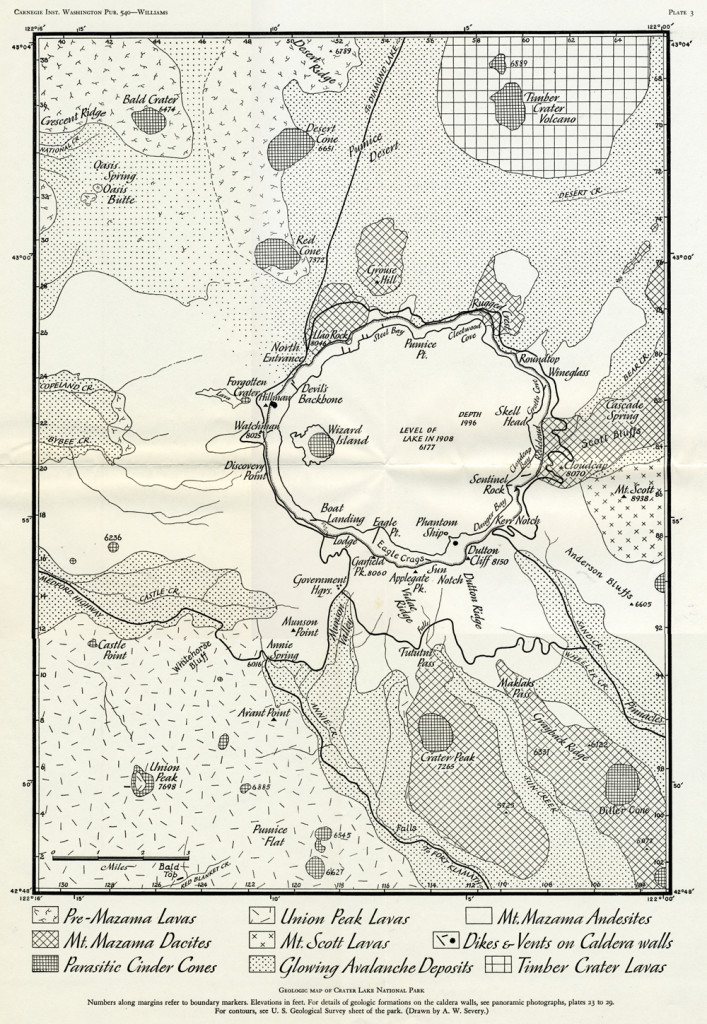The Geology of Crater Lake National Park, Oregon With a reconnaissance of the Cascade Range southward to Mount Shasta by Howell Williams
The Foundations of Mount Mazama
The Union Peak Volcano
Parasitic Cinder Cones
As a volcano gains in height, there is increasing tendency for eruptions to occur from cracks on the sides. This was the case at Union Peak. Not only were lavas erupted from lateral fissures, but several parasitic cinder cones were formed along them (see map, plate 3). All have been so modified by glacial action that little of their original form remain.
Plate 3.
The best-preserved cone lies on the crest of the ridge immediately north of Castle Point, close to the northern base of the volcano. Here, a crescentic mound of cinders marks part of an old crater rim, but the eastern side of the cone has completely disappeared. Few of the fragments exceed a foot in diameter, and most are ovoid or subangular. They consist of red, brown, and black lapilli and bombs, among which may be found a few ropy lumps with iridescent, glassy skins. Possibly some of the thin lava flows with red, slaggy interbeds, exposed to the north of the cone, were earlier products of the same vent.
About 2 miles east of Union Peak, on 6885 Hill, dark, vesicular lavas are capped by scoria and agglutinate; a mile to the northwest is a round-topped, oval hill made up of scoria fragments and blocks of basalt up to 3 feet across; a third patch of scoria crowns the conical butte south of Whitehorse Bluff. These are the remains of other parasitic cones the craters of which have been obliterated by the passage of ice.
The recent cones close to the eastern base of the Union Peak volcano were formed, as we have already noted, long after the volcano became extinct, and since they belong to the activity of Mount Mazama their description is deferred.
***previous*** — ***next***


